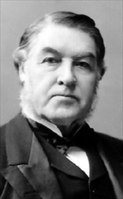8th Canadian federal election
|
|
||||||||||||||||||||||||||||||||||
|
||||||||||||||||||||||||||||||||||
|
|
||||||||||||||||||||||||||||||||||
|
213 seats in the 8th Canadian Parliament 107 seats needed for a majority |
||||||||||||||||||||||||||||||||||
|---|---|---|---|---|---|---|---|---|---|---|---|---|---|---|---|---|---|---|---|---|---|---|---|---|---|---|---|---|---|---|---|---|---|---|
|
||||||||||||||||||||||||||||||||||
|
||||||||||||||||||||||||||||||||||
The Canadian federal election of 1896 was held on June 23, 1896, to elect members of the House of Commons of Canada of the 8th Parliament of Canada. Though the Conservative Party won a plurality of the popular vote, the Liberal Party, led by Wilfrid Laurier, won the majority of seats to form the next government.
The governing Conservative Party, since the death of John A. Macdonald in 1891, was disorganized. Following Macdonald's death, John Abbott spent a year as Prime Minister before handing over to John Thompson. Thompson proved a relatively popular Prime Minister, but his sudden death in December 1894 resulted in his replacement by Mackenzie Bowell, whose tenure as Prime Minister proved a disaster. The Conservatives soon became viewed as corrupt and wasteful of public funds, partially due to the McGreecy-Langevin Scandal. Issues like the Manitoba Schools Question had cost the party support in both French and English Canada.
Though Bowell nominally remained Prime Minister until the election was called, leadership of the Conservative Party had been functionally taken over by Sir Charles Tupper, a Father of Confederation and former Premier of Nova Scotia. Earlier, in February 1896, Tupper introduced remedial legislation to settle the Manitoba dispute, but it was filibustered by an alliance of extreme Protestants led by Dalton McCarthy and the Liberals. This filibuster resulted in Tupper abandoning the bill and asking for a dissolution. Parliament was dissolved on April 24, 1896, and, in accordance with an agreement between Bowell and Tupper that the latter would become Prime Minister following the election call, he became prime minister on May 1, 1896, thus forming the 7th Canadian Ministry.
...
Wikipedia


